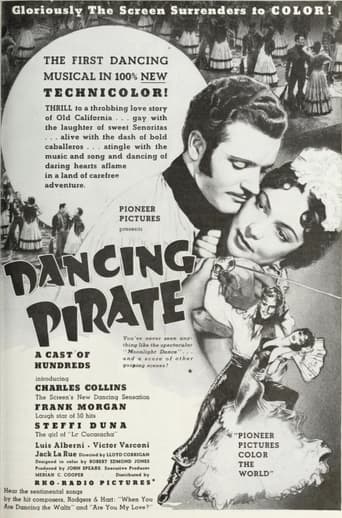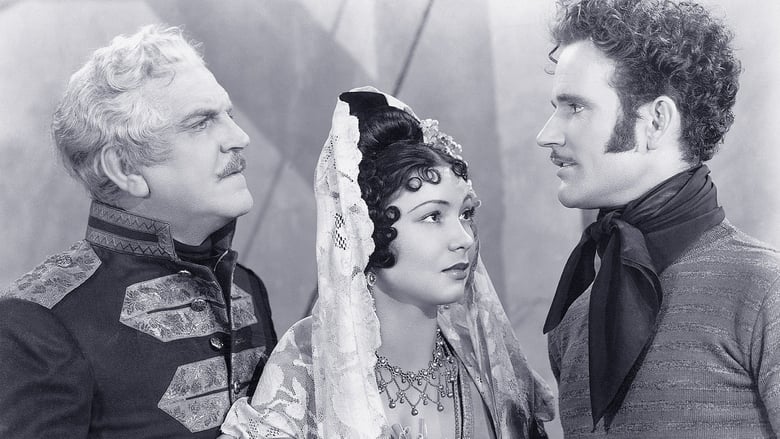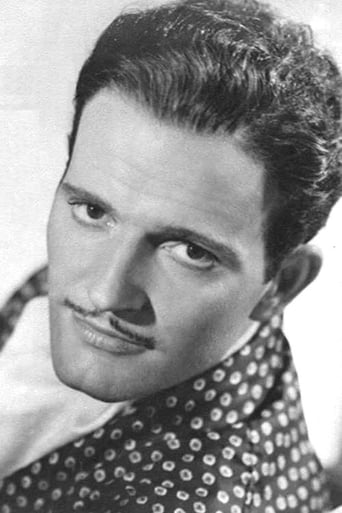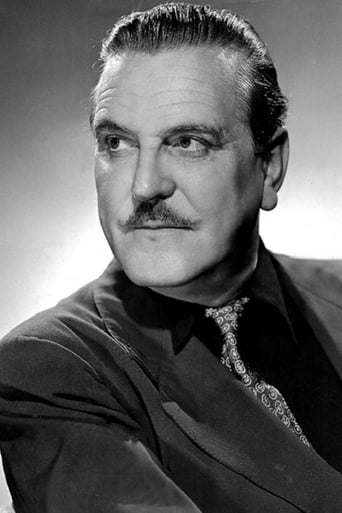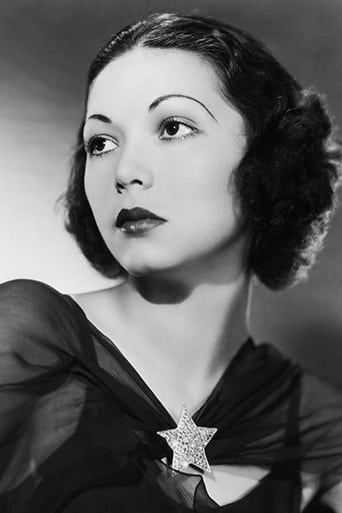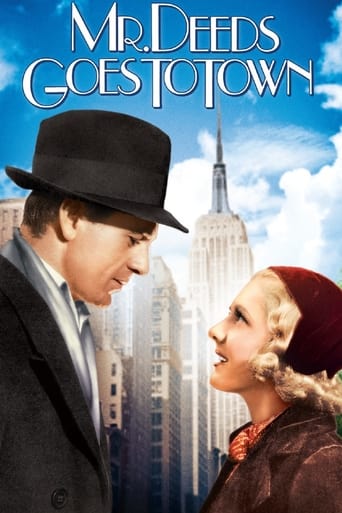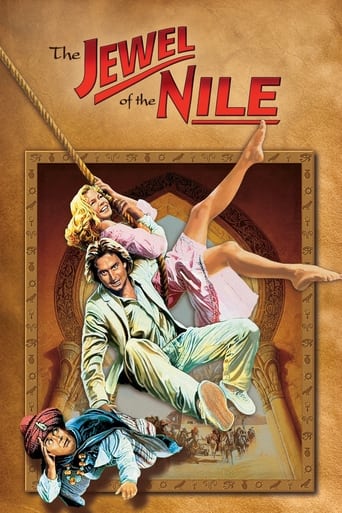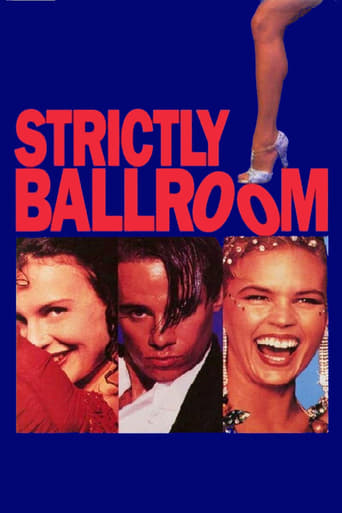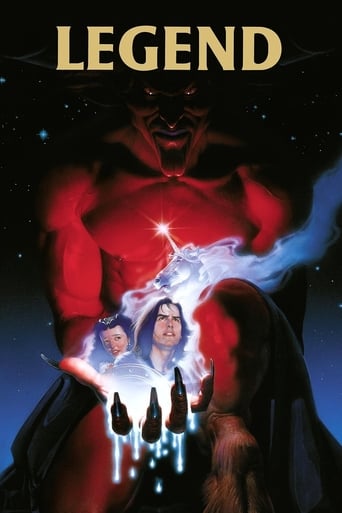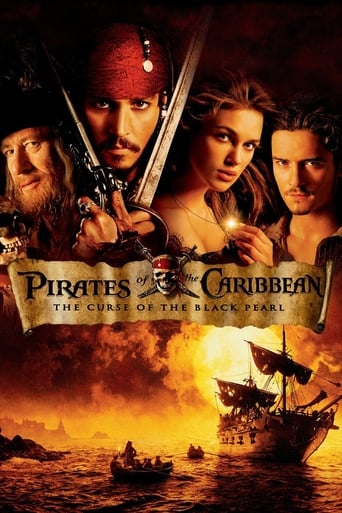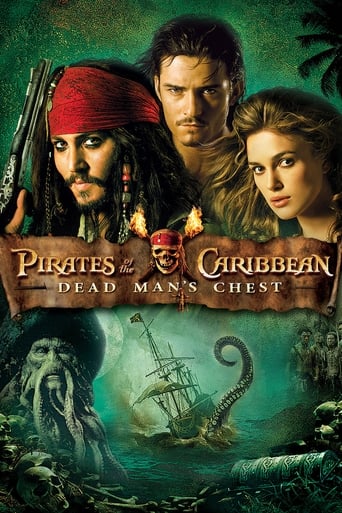Dancing Pirate (1936)
Jonathan Pride is a mild-mannered dance instructor in 1820 Boston. En route to visit relatives, Jonathan is shanghaied by a band of zany pirates and forced to work as a galley boy. When the pirate vessel arrives at the port of Las Palomas, Jonathan, clad in buccaneer's garb, makes his escape. Everyone in Las Palomas, including Governor Alcalde (Frank Morgan) and fetching senorita Serafina (Steffi Duna), assumes that Jonathan is the pirate chieftain, leading to a series of typical comic-opera complications.
Watch Trailer
Cast
Similar titles
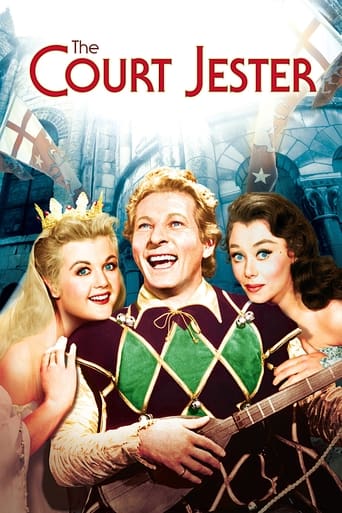
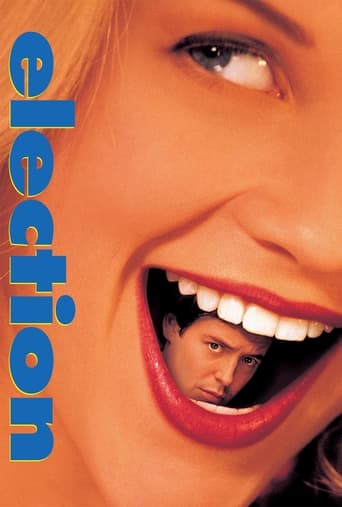
Reviews
Wow! Such a good movie.
Very very predictable, including the post credit scene !!!
Clever, believable, and super fun to watch. It totally has replay value.
The thing I enjoyed most about the film is the fact that it doesn't shy away from being a super-sized-cliche;
It's very difficult to predict what you will think of this idiosyncratic musical comedy. Filmed in 3 strip Technicolor, it's only been available in B&W copies for decades. However, apparently, a full Technicolor copy surfaced in 2015, so perhaps this will be made available in time. This would be especially valuable for the colorful dances in the Mexican village of La Paloma.......The film title is misleading. The dancing master, Johnathan((Charles Collins) who is the main character, is not a pirate. Rather he was shanghaied from his Boston home by some pirates, and given menial jobs to do, until he escaped in coastal Mexican California during a shore operation.(Just why the pirates went around Cape Horn to the then backwater of California is not explained). It's understandable that the people of this village might be fearful with his arrival, as, from a hill, they saw a pirate ship off shore, and initially feared that he was the captain. As it turned out, none of the real pirates followed him. Just what they had in the casks they offloaded nearby is a mystery, but they didn't come looking for him before shoving off. His cask was different because he had put his aunt's umbrella and music box in it. The umbrella would come in handy numerous times In subduing enemies, while the music box sometimes served as music for dancing.......Before he was shanghaied, he was a dancing master in 1820 Boston. Recently, he had been specializing in teaching the imported European waltz, which was much simpler than most other dances being taught in America.(Historically, the waltz was first introduced in the US, in Boston, but in 1834, not in1820). However, there was much initial resistance to it, because it involved the revolutionary practice of the couple facing close together, with the man wrapping his arm around his partner's waist. Initially, this was considered to intimate.. When, he got to Mexico, he found this attitude even more infirmly ingrained, although eventually, they accepted it.......In addition to waltzing, Jonathan exhibited some tapdancing, often mixed with skipping or jumping, rather in the manner of Ray Bolger(the scarecrow in "The Wizard of Oz"). In Boston, after a class, he so danced around the room snuffing out candles.......Initially, the inhabitants of the Mexican village decided that Jonathan should be hanged. However, senorita Sera Fina objected that he should be given a chance to demonstrate if he was a proficient dancer. At first, he had to dance with the hangmen's noose around his neck! Then, they allowed him to dance without the noose. The village men still wanted him hanged, but the women strenuously objected, and he was given a reprieve. .......During these proceedings, Sera Fina's father(Frank Morgan),who functioned as the town mayor, was quite prominent in the proceedings. He exhibited his signature bumbling and stammering mode of speech and behavior, which he would carry with him into his role as The Wizard, in "The Wizard of Oz). He was the most interesting character in the film, from the audience's point of view.......Jonathan faced a new threat in the form of some renegade soldiers from Monterey. At first, they were thought legitimate, and wanted to take him on Monterey for trial. Also, the captain(Victor Varconi) wanted to marry Sera Fina, demanding so many sheep from the father. Meanwhile, Jonathan made friends with the local Indians, and induced them to take part in an attack on the soldiers. Their only weapon was lengths of rope, which they used to lasso the soldiers from above, then hoist them up or tie them up. Meanwhile, Jonathan was jumping around bashing soldiers with his unbelievably resilient umbrella handle. Finally, he interrupted the wedding ceremony for SeraFina and the captain of the soldiers. The captain challenged him in a duel, he using his sword, and Johnathan using his umbrella. Using his superior maneuverability, Jonathan finally was the clear winner, and replaced the captain in the wedding ceremony. A celebration, with much colorful dancing, was held.
Here is a film that does not even appear in the Leonard Maltin Classic Movie Guide. It's reputation is such that most people would overlook it even if they had the chance to see it. The third feature film to be filmed in Technicolor, it seems to exist only in a black-and-white public domain print. That said, I found this to be a delightful old-fashioned style musical with a wisp of a plot that was apparently based on a true story. Charles Collins, an English musical star is featured in the lead role, and he proves to be a competent actor as well as a terrific dancer. Steffi Duna was enchanting in the female leading role. There are several well-staged dance numbers set to beautiful Rodgers and Hart music. One book says that these songs, along with just about everything else in the movie "walks the plank". I find the music, especially the lovely "When You're Dancing The Waltz" to be beautiful. My only regret is not being able to see this in Technicolor. However, I suppose, with all the older films that have been lost due to indifference or neglect, I should be grateful to see this in any form. Anyway, I liked it, regardless of what the critics say.
The only things this turkey has going for it are the claim that it is in Technicolor and Rita Hayworth "stars" in it.My VHS copy is in color; however, nowhere in the credits do "Technicolor", "Technicolor Director" or "Technicolor Consultant" appear. I cannot see the Technicolor Corporation allowing any 1935 movie using its process to be released without there being ample credit given to Technicolor.If Rita Hayworth or rather Margarita Cansino appears in the film, she is totally unrecognizable. I am familiar with the Rita Cansino with the sleek black hair and low forehead who danced in the Spencer Tracy/Claire Trevor film Dante's Inferno; so, I was not looking for the flamboyant redhead of the characterized Hayworth -- except for the shorn platinum blonde of The Lady from Shanghai -- during her zenith on the silver screen.All pans aside, it does have Frank Morgan at his bumbling best; although, even at $5.00 with a poor copy of the American English language truncated version of von Sternberg's The Blue Angel, it was no real bargain.
The DVD is in B & W. Remastered but lacks any depth --- still looks old. Set in the 1800s the "Dance Master" does a lot of 1930 style tap dancing. Frank Morgan is funny but the rest is almost a waste of time. The whole problem with the culture and his teaching WALTZ dancing was how putting his right hand on the lady was an offense. I can't tell if this was for the 1936 audience or part of the 1800s culture. A few times a Mexican band played a few bars of Malaguena and then mixed it in with some other music style. Plot holes--The main character was kidnapped and forced to work on a pirate ship. Then he is let loose on land-the map shows LOS ANGELES; but he is clearly in Mexico... The map shows California is a state although in the 1800s; I believe the map is wrong for that era. Then when he is walking into town; the pirate ship leaves him--there is no explanation at all....
